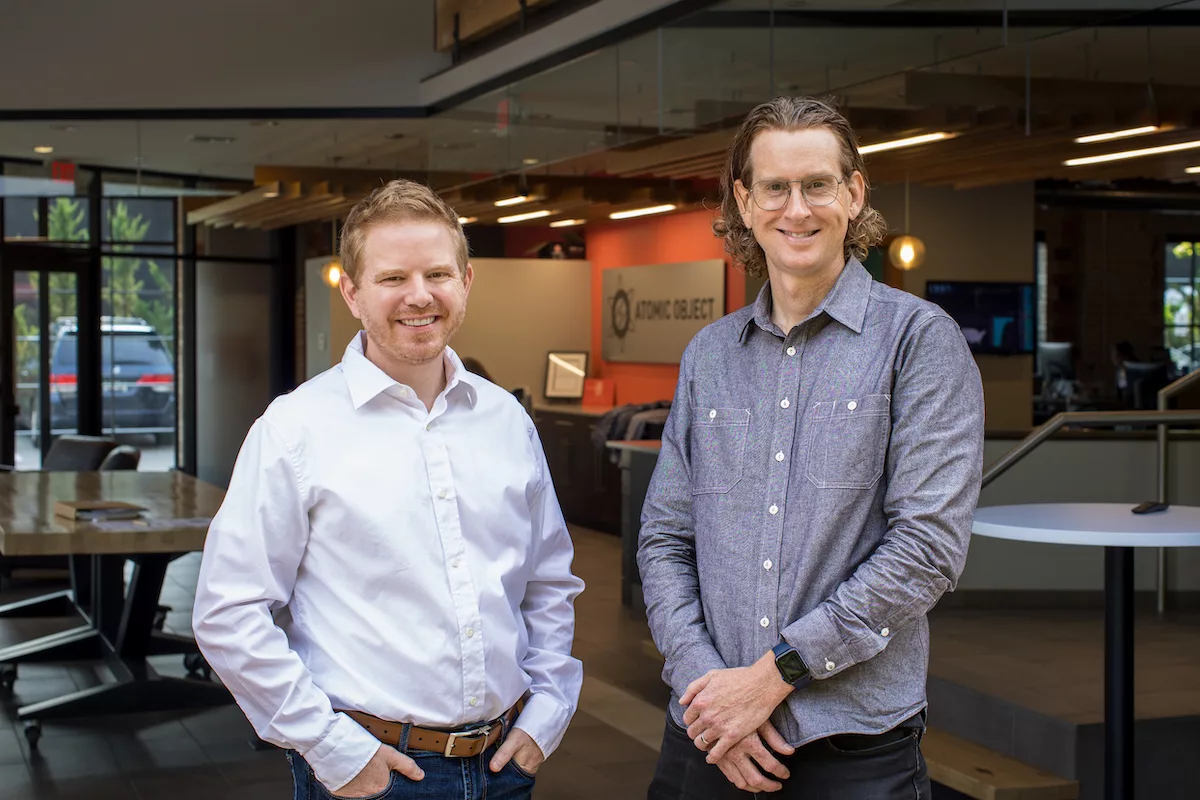In the digital age, we are seeing more and more remote communities aggregate through online platforms. Some are genuine and some give a false sense of belonging. It is important in the remote-work world that organizations are providing their employees with a sincere community. At City Innovation Labs we have a core value of Faith and People First and it is how we’ve made our company into a place people actually want to work. Here’s a glimpse into our every day:
We Prioritize Community
From the beginning of CIL, placing people above everything else has been a core value. Our team cares deeply about each other and that allows for great work to be done! Did you catch that? Taking the time and effort to pour into each team member results in quality performance. Here’s why:
- Better collaboration. The more team members get to know each other, the more empathy they bring to their teamwork. Conversations are more open and honest and conflict resolution can happen in a healthy environment.
- Greater than ourselves. It is within our natural make-up to want to be a part of something bigger than ourselves. When we are invited into a community and valued, we naturally contribute because we want it to flourish.
Remote Community Looks Like…
Every person, team, and company is different. First, CELEBRATE THAT! Then, recognize what your community NEEDS most and start intentionally experimenting (another value we cherish at CIL is Experiment and Throw Bad Ideas at the Wall). There is no one-size-fits-all formula for building a remote community. There is a lot of trial and error so start getting comfortable with that. Here are some of the pieces that have worked for us.
Common Mission ✔
As a company, it is important for us to state and restate our mission because it drives our everyday interactions. Our mission is ‘To glorify God by loving others and being a catalyst for their personal and workplace transformation.‘ Not everyone identifies as a Christian on our team, but it doesn’t change our mission. We are people-centric and that always centers us.
Built-in watercooler talk ✔
Since we do not have the chance to pop by offices or chit chat while refilling our coffee cups for the fifth time, we have incorporated talk time into our schedules.
- → Monday Weekly Review Meeting. Kick-off the week with a casual team meeting to catch-up from the weekend. Sharing is optional, but the point is to connect before we dive into the workweek. It’s typically a 25 minutes chat with our team of 10 people and five minutes of business updates. It’s really fun to see where the conversations take us! We have talked about everything from travel and cultural differences to cooking with grasshopper flour and our obsession with donuts. Actually, food is probably the most frequent topic. We love food.
- → Start meetings with a question or small talk. Often it is easy to jump straight into the nitty-gritty of work, so being intentional with starting meetings by asking random questions or seeing how weekends went helps connect the team.
- → Setup 1:1 meetings. We don’t have a 1:1 meeting with everyone, but leadership makes it a priority to take at least 30 minutes weekly to check-in with people. These meetings are structure-free but are a great time to check-in on how different projects, personal development, or life is going for a team member.
Space to be vulnerable ✔
Not in the sense that you need to provide physical space, but emotional space. This requires trust and time, so keeping this in mind from the beginning will help team members feel they are safe to be open and honest.
- → Iron Sharpens Iron. We believe that partnering team members to intentionally meet helps strengthen each person and our team. CIL provides time for employees to talk through goals, personal development, work, and life with another partner (or power trio 😉 ) Again, there is no right or wrong way and these discussions often evolve depending on what the group is focusing on.
Having fun!! ✔
You have to get creative to ensure fun is inserted throughout the day, otherwise, burnout happens. Yes, we have experienced this as a whole team.
- → Random Slack channels. These are meant to provide an avenue to share, laugh, learn, and maybe cry a little (or a lot if you’re me). These are several of the fun ones we have:
- Wellness
- Cookbook
- Random
- Learning
- Prayer
- → TACOS! We use a tool through Slack to give out virtual tacos to our teammates to recognize the awesome work they do day-in and day-out. It is a silly and really meaningful way to acknowledge one another every day. BONUS you can use the tacos to redeem company rewards.
- → Team Week. Every year our company gathers everyone in one physical location (as best as possible) to strengthen relationships and work and relax together. It is an awesome time to connect, grow, and dream together.
- → Virtual Holiday Parties. Yup, we do this. Our HR department plans and coordinates time around holidays to meet as a group and play games, expense food and just have fun together. It takes a lot of intentional coordination from a planning standpoint and commitment from the team to ensure they will be there. You can’t go around caroling at offices to make sure someone comes to the break room to relax.
Retrospectives of the Remote Community ✔
Every so often we take a step back and look at how our team is doing as a whole. We ask questions like, “how are people feeling?”, “What do we need to put in place to help the team?”, or “What needs to be changed to help our team to connect better?” It is SO IMPORTANT to do this because we often may think something will work and the reality is that the team doesn’t want or need what we put in place. It has happened to us and it will happen again. We do not want to be stagnant as our community is always changing. It is healthy to recognize that and embrace it.
Take-Aways
- → Notice I didn’t talk about “tools” to use. There are plenty of platforms to help you reach your remote community goals, but that is all they are, tools. Moreover, tools are not the focus, people are the focus. We use Google Hangouts and Slack primarily and have tried other tools that have failed. Again, every team is different and will require different tools to support them. Take advantage of those free trials out there!
- → Create your mission and then make that mission known! Leadership is key here. If they take it seriously and act upon it, others will follow.
- → Provide social time for your team and let them know they have the support to take it! How you talk about time is important. It can either drive people to be empowered to take time to get to know their teammates or they will feel like they are being watched to make sure they are not “wasting” time. Relationship building is important!
- → Get comfortable talking about your community. Know your team and their thoughts on work culture. Listen. Then once you listen, do something! Nothing breaks a community faster than pretending to listen but do nothing to address needs or concerns.
I’ll leave you with a quick example. Our team was noticeably stressed and de-energized one-week last winter. Therefore, in a small team brainstorm, a wacky idea was thrown out, YAHTZEE TOURNAMENT! We made an announcement to clear Friday afternoon for a couple of hours and to expense some snacks. Several Google Hangouts were created as “game rooms” and pairs would break off to play against each other. It allowed everyone to relax and get to know each other better. As a result, a bigger message was broadcast that this company cares about you, not just your output of work.
I hope a glimpse into our remote community has sparked some ideas for you. Community is so important in a world where it is accessible at all times, but not always intentional. It is a true benefit within a company that cares.



